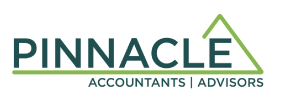
Things to remember when sending us your year-end files
When it comes time to send us your year-end files, it can sometimes feel like an overwhelming task to ensure that you have included everything needed. In an effort to simplify this process, we have compiled a list of things to remember.
 Make sure the bookkeeping is complete up to the year-end date
Make sure the bookkeeping is complete up to the year-end date
This is important because once we receive your bookkeeping files, we will begin to compile financial statements and/or prepare your tax return based on this information. If there are any transactions missing from the bookkeeping file, this compromises the accuracy and completeness of financial statements and tax returns.
Lock-down the bookkeeping file at the year-end date
Locking down your bookkeeping file ensures that the information we have on file is consistent with your files by disallowing the entry of any transactions dated prior to the year-end date. If the bookkeeping file is not locked down once submitted to us, and there are any transactions entered that are dated prior to the year-end date, this will cause a discrepancy between the account balances in your bookkeeping file versus what we have on file, which can lead to a number of problems, and extra costs in resolving discrepancies.
Include copies of statements and reconciliations for all bank, credit card and loan accounts
Ensure that the date of each statement is at or slightly after your fiscal year-end so that it can support the balance in the account at year-end. If the balance shown on the statement differs from the ledger balance, please be sure to include a reconciliation that explains the difference between the two.
Include documentation for any large capital purchases or sales
This can include the purchase or sale of equipment, vehicles, furniture, land, or other assets used to generate income. For example, if your business purchased a truck, include a copy of the purchase and sale agreement. In the case that your business sold an asset during the year, we will also need documentation to support the original purchase price of the asset.
If you use your personal car for business purposes, send us a vehicle log
This can be as simple as writing down the date, kilometers driven, and reason for each trip. We will then include a per kilometer allowance that will reduce your taxes payable.
Include a summary of home-office expenses
If you have an office in your home, you can claim expenses related to that office, further reducing your taxes payable. The summary should include the size of your home, the size of your office, electricity, hydro, phone, internet, home insurance, mortgage interest, and any repairs performed throughout the year.
If you have any questions, or would like assistance in preparing your year-end files, please give our office a call and we will be happy to help.
Written by: Melissa McCready

